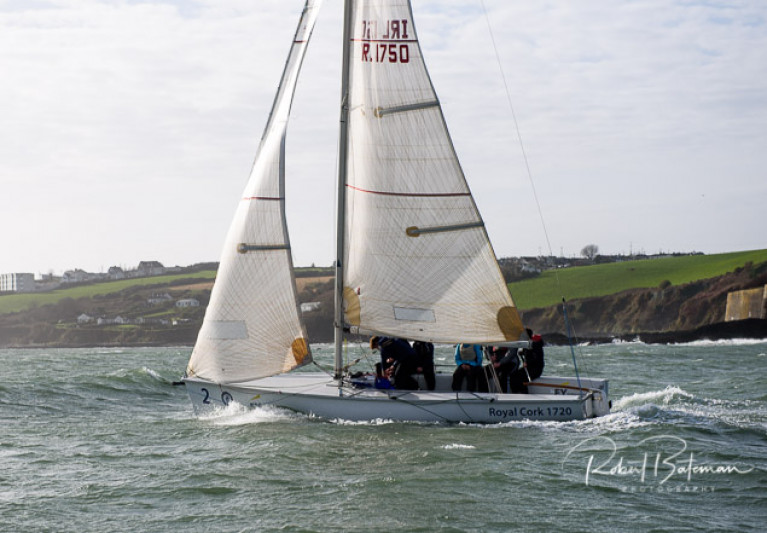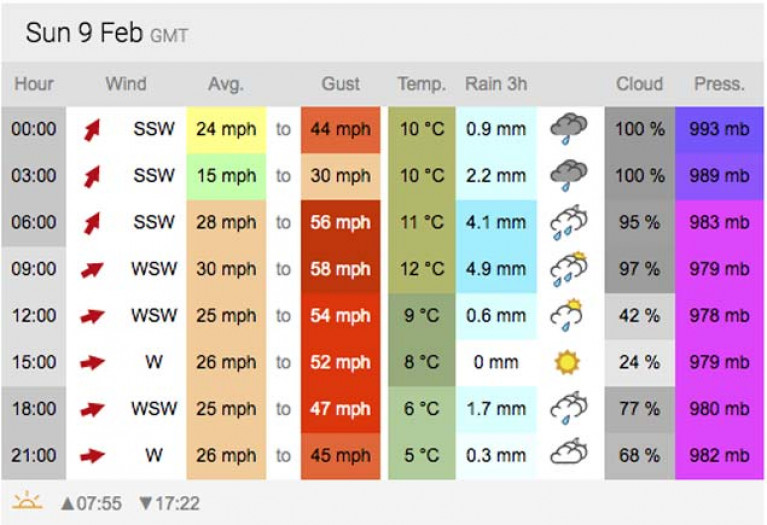Displaying items by tag: Storm Ciara
Oban Lifeboat Launches Into Storm Ciara
The volunteer crew of Oban RNLI’s lifeboat Mora Edith MacDonald faced the gale-force conditions of Storm Ciara on two separate callouts yesterday (Sunday 8 February).
At 10:14am, HM Coastguard requested an immediate launch following reports of a group of divers in difficulty to the south of Oban, in Western Scotland.
Despite challenging conditions the lifeboat reached the scene quickly, but found that the divers had already been recovered from the water.
The lifeboats small inflatable XP boat was made ready to put a crew ashore to assist with casualty care. However, the Scottish Ambulance Service and coastguard rescue teams arrived at that point and were able to assist the casualties.
At this time, further reports reached the coastguard of another diver drifting to the north. The lifeboat immediately proceeded to the scene and discovered that the object was actually the dive gear of one of the divers now being treated by the Scottish Ambulance Service.
After the crew returned to station and as they were drying off, one of the volunteers noticed a dingy drifting across Oban Bay.
It was observed that the oars were in place on the dinghy, which prompted concern that someone may have fallen from it, so the crew relaunched into Storm Ciara to ensure that no life was at risk.
Several boats were on moorings in Oban Bay and a systematic search of these moorings began. Oban Coastguard Team, who had also just returned from the previous incident located the dinghy and were able to identify a name on it.
Fortunately this allowed them to locate the owner, who was safe and well and unaware that his dinghy had gone adrift.
Spring Sailing Events Cancelled By Storm Ciara
Racing in Dublin Bay, Kinsale Harbour, Belfast Lough, Dun Laoghaire Harbour have been cancelled today due to Storm Ciara.
In fact, such was the extent of the deteriorating weather forecast many of the regatta organisers gave early notice to scrub racing yesterday.
However, racing in the shadow of a gale warning, Monkstown Bay's Laser League in Cork Harbour did take place yesterday as Afloat reports here
The DBSC Spring Chicken, Kinsale's Frostbite League Monkstown Bay's Laser League and DMYC's dinghy series are scheduled to sail again next Sunday.
Live Dublin Bay weather cam here
Storm Ciara Threatens Weekend Yacht Racing
Storm Ciara's expected arrival in Ireland on Friday with southerly winds gusting to over 50 mph means a number of weekend sailing fixtures are now in doubt.
Dublin Bay Sailing Club's second race of the Spring Chicken Series is scheduled for Sunday but race organisers have already warned: "Next Sunday is looking very breezy at moment but you never know!"
Met Eireann has issued the following outlook:
"After a mostly dry start on Saturday morning, heavy rain and strong and gusty southerly winds will move eastwards over the country bringing a risk of very strong squally winds, with gales along all coasts and strong gale force winds along the northwest coast. The rain possibly lingering into the evening in parts of Leinster and Munster.
Cold and largely dry for a time on Saturday night with lows of 2 to 6 degrees. However, another spell of rain and strengthening south to southwest winds will arrive into western areas before morning.
Current indications suggest a very strong to near gale force and gusty southwest wind will develop on Sunday along with heavy rain, as Storm Ciara tracks to the north of the country. The rain will clear to showers and squally westerly winds later in the day, with a risk of some hail and thunder. Highest temperatures 10 to 13 degrees".































































